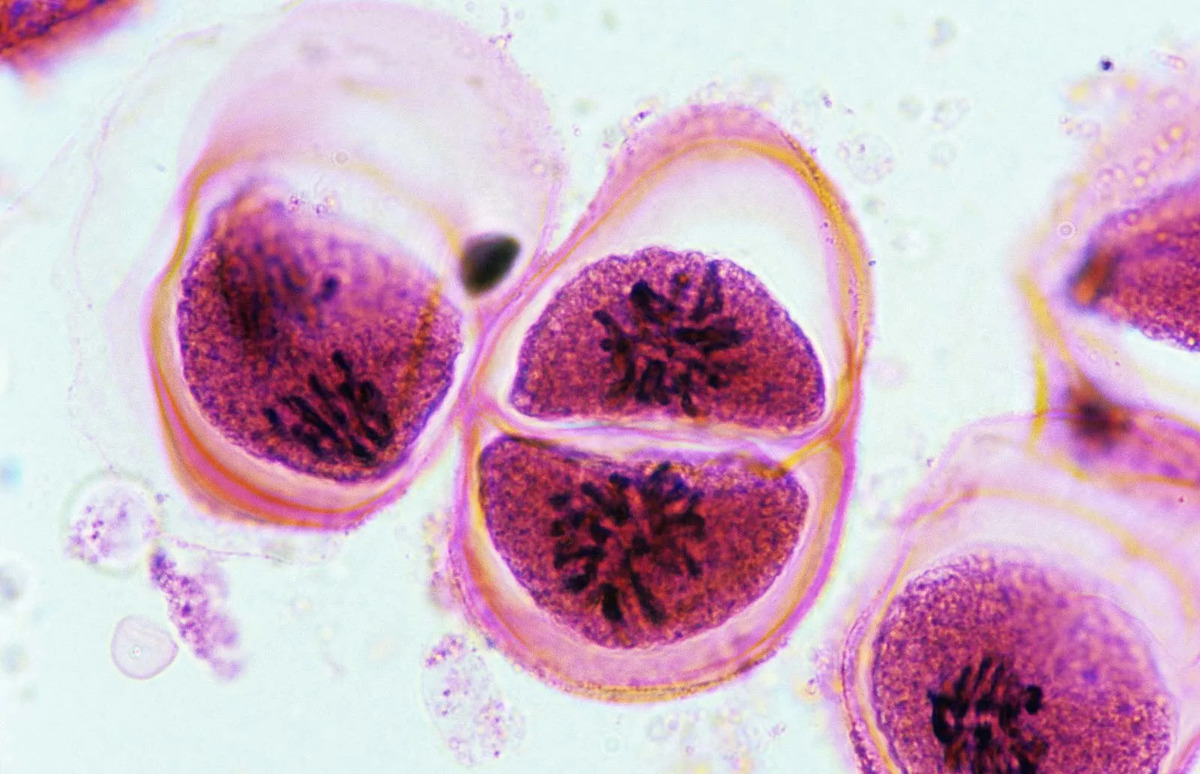
Prophase is the first stage of mitosis, where the magic of cell division begins. Ever wondered what makes this phase so special? Chromosomes condense and become visible under a microscope, looking like tiny X-shaped structures. The nuclear envelope starts to break down, setting the stage for the chromosomes to move freely. Spindle fibers form from the centrosomes, which migrate to opposite poles of the cell. These fibers are crucial for pulling the chromosomes apart later. Prophase is like the opening act of a grand performance, setting everything in motion for the cell to eventually split into two. Ready to dive into more fascinating details? Let's get started!
What is Prophase?
Prophase is the first stage of cell division in both mitosis and meiosis. During this phase, several critical events set the stage for successful cell division. Let's dive into some fascinating facts about prophase.
-
Chromatin Condenses: Chromatin, the material that makes up chromosomes, condenses into visible chromosomes. This makes it easier for the cell to manage and separate genetic material.
-
Formation of Sister Chromatids: Each chromosome duplicates, forming two identical sister chromatids connected at a region called the centromere.
-
Nuclear Envelope Breakdown: The nuclear envelope, which encloses the nucleus, starts to break down, allowing the chromosomes to interact with the cell's cytoplasm.
Key Structures in Prophase
Several structures play crucial roles during prophase. Understanding these components helps us appreciate the complexity of cell division.
-
Centrosomes: These organelles move to opposite poles of the cell, helping to organize the microtubules that will separate the chromosomes.
-
Spindle Fibers: Microtubules form spindle fibers, which attach to the centromeres of the chromosomes, guiding their movement.
-
Kinetochore: A protein structure called the kinetochore forms at the centromere, serving as the attachment point for spindle fibers.
Prophase in Mitosis vs. Meiosis
While prophase occurs in both mitosis and meiosis, there are some differences between the two processes.
-
Prophase I in Meiosis: In meiosis, prophase I is more complex and involves homologous chromosomes pairing up and exchanging genetic material in a process called crossing over.
-
Prophase II in Meiosis: Prophase II is similar to prophase in mitosis but occurs in haploid cells, preparing them for a second round of division.
Importance of Prophase
Prophase is essential for ensuring accurate cell division. Let's explore why this phase is so critical.
-
Genetic Stability: Proper chromosome condensation and alignment during prophase help maintain genetic stability, preventing mutations.
-
Cell Cycle Regulation: Prophase is tightly regulated by the cell cycle, ensuring that cells only divide when conditions are right.
-
Cancer Research: Understanding prophase can aid in cancer research, as errors in this phase can lead to uncontrolled cell division.
Interesting Facts About Prophase
Here are some additional intriguing tidbits about prophase that highlight its complexity and importance.
-
Duration: Prophase can last from a few minutes to several hours, depending on the type of cell and organism.
-
Visualization: Scientists often use fluorescent dyes to visualize chromosomes during prophase, making it easier to study this phase under a microscope.
-
Evolutionary Conservation: Prophase is highly conserved across different species, indicating its fundamental role in cell division.
-
Educational Tools: Prophase is a popular topic in biology education, with many models and animations available to help students understand this critical phase.
Final Thoughts on Prophase
Prophase is a fascinating stage of cell division. During this phase, chromosomes condense, becoming visible under a microscope. The nuclear envelope breaks down, allowing spindle fibers to attach to chromosomes. This ensures that genetic material is accurately divided between daughter cells. Without prophase, cells couldn't properly replicate, leading to genetic disorders.
Understanding prophase helps grasp the basics of biology and genetics. It's a crucial step in mitosis and meiosis, processes vital for growth, development, and reproduction. By studying prophase, scientists can develop treatments for diseases caused by cell division errors.
So, next time you think about cell division, remember the importance of prophase. It might seem like a small part of a larger process, but its role is indispensable. Keep exploring the wonders of biology, and you'll uncover even more amazing facts about how life works.
Was this page helpful?
Our commitment to delivering trustworthy and engaging content is at the heart of what we do. Each fact on our site is contributed by real users like you, bringing a wealth of diverse insights and information. To ensure the highest standards of accuracy and reliability, our dedicated editors meticulously review each submission. This process guarantees that the facts we share are not only fascinating but also credible. Trust in our commitment to quality and authenticity as you explore and learn with us.


